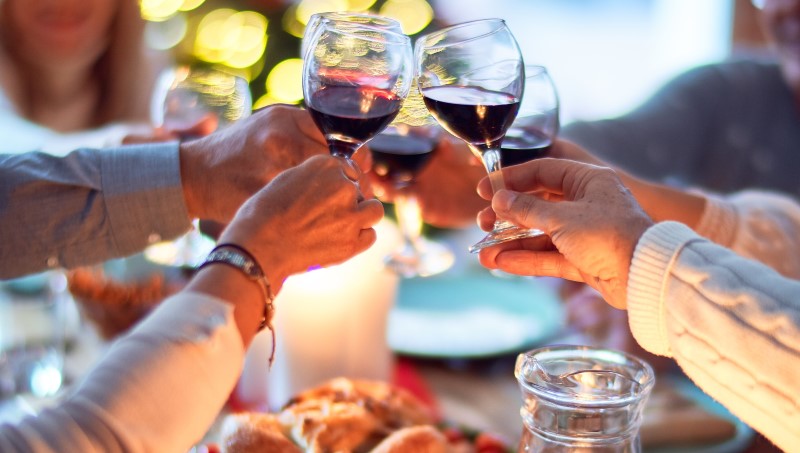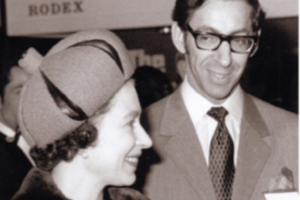Thanksgiving wasn’t always what it is today
When we think of Thanksgiving, we think of family, of special times together, and of sharing. A close second in importance to Christmas as a celebration, Thanksgiving is the season when American families make that extra effort to see one another and to share that all-important Thanksgiving dinner.
Ask any American to name the essential components of a Thanksgiving dinner and they will probably answer that there must be turkey with cranberry sauce, followed by pumpkin pie. However, the meal eaten by the Pilgrims at the first official Thanksgiving celebration bore little resemblance to the food enjoyed by Americans today.
When did Thanksgiving celebrations start?
The exact date when the first Thanksgiving meal was eaten is not known, but it is thought to have taken place sometime between the end of September and early November in 1621. Although this feast—consumed at Plymouth Plantation by the Pilgrims who, in 1620, had arrived in America on the Mayflower—is taken as the starting point of the tradition, similar celebratory meals were already being eaten by established French, English, and Spanish settlers, and they had been doing so since the sixteenth century, especially in Virginia. What distinguishes the Plymouth Plantation meal as special are the facts that it lasted for three days and that it was more than a simple harvest festival of thanks. It was, in fact, a celebration of survival.
Did the Pilgrims eat turkey?
Whether or not the Pilgrims ate turkey at the meal is a moot point. While records written by the colony’s then governor, William Bradford, relate that four men were sent out “fowling,” it seems likely that the men returned with a variety of wild birds, such as duck, geese, and swans. Wild turkeys were to be found in the area, but they would have been much smaller than the domesticated variety we know today, with a rich “gamey” flavor and less breast meat. A large number of them would have been needed to feed the diners if turkey was the only meat available. Bradford certainly mentions that venison was on the menu, and this was either spit-roasted over an open fire or turned into a stew. Interestingly, it is also thought that fish and seafood—mussels, oysters, and eels, in particular—formed part of the protein component of the meal. These foods do not usually feature in modern Thanksgiving dinners.
In essence, for their survival, the Pilgrims were having to rely on foodstuffs that were available locally, along with whatever they had brought across the Atlantic with them. This was also true of the accompanying vegetables, which would have included the beans, carrots, spinach, and cabbage they had planted on their arrival. In terms of starch, potatoes would not have featured in the meal, either in the white form or as sweet potatoes. Despite having been discovered in South America by the Spaniards in the late sixteenth century and taken to Europe, these tubers had not become universally popular by the time the Pilgrims set sail. It is, therefore, not just unlikely that they would have taken them aboard the Mayflower but that they were even aware of them.
Instead, the carbohydrate element of the Pilgrims’ meal would have come from the local plant known as “Indian corn,” with the kernels having been stripped from the cob before being boiled and mashed into a type of porridge. Cranberries, a universal accompaniment to the modern Thanksgiving dinner, would have had no part to play in the Pilgrims’ meal because these tart berries, used by the Native Americans as a natural dye, were not commonly eaten by Americans of European origin until 50 years later, by which time sugar had become more widely available.
Pumpkin pie, but not as we know it
So, what about dessert and that perennial favorite, pumpkin pie?
Because these squashes grew abundantly in New England, pumpkins certainly would have formed an essential part of the Pilgrims’ general diet, just as they did in that of the local Native Americans, the Wampanoags. They would not, however, have been consumed in pie form, mainly due to the fact that the Pilgrims had neither wheat flour nor ovens for making pastry. The most likely method of cooking these colorful squashes would have been by baking them in fire embers. It has also been suggested that pumpkins may have been hollowed out and the shells filled with milk and honey to form a type of custard—a recipe that could perhaps have been the precursor to the traditional pie filling.
One of America’s favorite holidays
It might seem unusual that the Pilgrims chose to celebrate their first harvest with a three-day meal, but they truly had something to be thankful for. They had, after all, established themselves as a small colony against all the odds. As English Dissenters (Protestant Christians who had separated from the mainstream church), they would have seen this meal as a very special way of thanking God. Considering that only 50 percent of their original number had made it through the harsh winter after their arrival on the shores of New England (leaving only 22 men, 4 women, and around 25 children and teenagers alive), it would appear, on the face of it, that they had little to celebrate. However, those 50 or so people had survived, and they had managed to both obtain and produce sufficient food to enable them to form a small settlement.
While there was an element of optimism in the event, it is likely that the Pilgrims were nevertheless, at least in part, continuing to observe a harvest festival that they had previously celebrated in England. On this special occasion, however, the Pilgrims were joined by 90 Wampanoags, the Native Americans who had been so instrumental to the Pilgrims’ survival through teaching the newcomers how to hunt local game and fish and how to grow unfamiliar crops, such as maize.
1789: the official Thanksgiving Day was established
Of course, this first meal was an informal gathering to give thanks to God in accordance with the Pilgrims’ religion, but, just two years later, Thanksgiving was given civil recognition by Governor William Bradford, thereby effectively separating it from the Church and giving it a more secular aspect. However, it was to be more than 100 years before the practice of thanksgiving as we know it was to become enshrined within the American culture.
On October 3, 1789, President George Washington created an official Thanksgiving Day. Over the following years and presidencies, Thanksgiving became something of a hit-and-miss affair, with the date forever changing and occasionally even being skipped altogether. It wasn’t until 1863, under President Abraham Lincoln, that a specific date for Thanksgiving—namely, the last Thursday in November—was declared. The event was subsequently enshrined in law as an annual holiday by President Ulysses S. Grant in the Holidays Act of 1870.
With Thanksgiving now an annual holiday, traditions that we still see today started to become fully established, with football games and parades and, of course, families coming together for a traditional Thanksgiving dinner that, by this time, featured the ubiquitous turkey and pumpkin pie.
Following a brief attempt by President Franklin D. Roosevelt in 1939 to change the celebration to the third Thursday in November, the fourth Thursday date became law at the end of 1941.
A memoir—the perfect gift for showing gratitude
As with any traditional event, customs change over the years and today, while more often associated with Christmas, the giving of gifts is becoming increasingly popular at Thanksgiving. Customized presents are particularly favored, as well as so-called “experience gifts” as people generally move away from material possessions towards less tangible life-enhancers.
When a LifeBook Memoirs autobiography is given as a gift, the recipient not only takes part in an enjoyable process as they reminisce about the people, places, and events of their lives, but they also have the opportunity to build the life story that they truly want—one that contains all their favorite stories and photographs. A LifeBook Memoirs autobiography experience represents a very special gift for the lucky recipient and creates a precious keepsake for their family and for generations to come.
By Halima Crabtree, LifeBook Memoirs Editor




